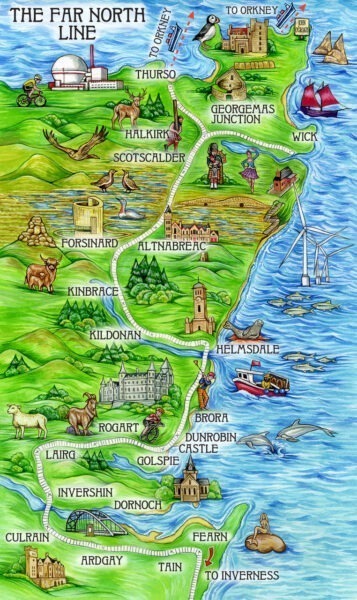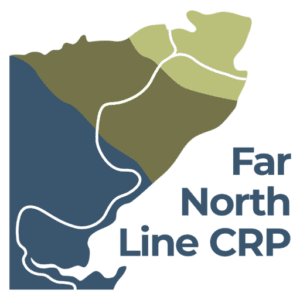
As you travel along the Far North Line, you realise you are taking a trip through history. The railway has connected communities and supported the region for over 150 years. It is more than just a railway line; it symbolises man’s perseverance, engineering, achievement, and community spirit.
The Origins and Ambition of the Far North Line
The Far North Line’s roots are in the 19th century, which saw a railway expansion throughout the UK. Cities and rural areas were transformed as it became easier to transport goods, connect people, and grow economies. The need for reliable transport was particularly felt in the Highlands. The North faced difficulties moving fish, wool, timber and other produce. In the past, travelling between towns and cities had been slow and often dangerous, especially in winter.
In 1863, the Highland Railway Company started a very ambitious project to create a railway line linking the north of Scotland with Inverness. The idea was to link the railway to Wick and Thurso, the most northerly towns in the UK. Given the rugged landscape, the route would have to cross, this would be no mean feat. With the population sparse and unpredictable weather, it was a considerable challenge.
However, despite all the obstacles, the railway line progressed. The first section from Inverness to Dingwall was opened in 1863, and by 1874, the final stretch to Wick and Thurso was complete. This monumental achievement made the Far North Line the UK’s most northerly railway.
Transforming Life in the Highlands
Life in the Highlands changed dramatically when the line opened. Communities isolated in the past were now linked to Inverness and further afield. Farmers, fishermen, and craftsmen could now send their produce, making it much more efficient and boosting the region’s economy. The railway impacted everyday life, and travel became easier for those seeking work, education, or medical care.
Another sector that saw growth was tourism. Visitors could now access the region, which again boosted the region’s local economy.
Engineering Challenges and Achievements
When you look at the area the Far North line traverses, you realise that it is a remarkable feat of engineering. The line crosses some of the most challenging terrain in Britain, between steep gradients, rocky outcrops, and bog land. The engineers had to use their ingenuity to overcome these obstacles, using bridges, viaducts, and tunnels as required. Every mile of the line is a reminder of what was needed to make the railway a reality.
Challenges Over the Years
Of course, life has moved on over the years. By the mid-20th century, car travel became more common, and rail services declined. Then, in the 1960s, the Beeching cuts happened, affecting many rural railways across the UK. This, too, was a very uncertain period for the Far North Line, but thanks to its vital role in connecting rural communities, it survived.
The Far North Line Today
Today, the Line still serves the North Highlands. It offers a practical transport solution for locals and an unforgettable visitor experience. Many of the line’s Victorian stations are still standing, although some of the small halts have disappeared, and now only the terminus stations are staffed. Those that remain serve as a reminder of the line’s long history.
Preserving Heritage – A Journey on the Far North Line
Efforts to preserve the Far North Line’s heritage are ongoing. Local organisations such as the Far North Line Community Rail Partnership, the Friends of the Far North Line and volunteers work to maintain historic buildings, improve stations, and promote the line as a sustainable travel option.
The line’s role in promoting sustainable tourism is vital today. With more people seeking eco-friendly travel options, the Far North Line provides a way to explore the Highlands while reducing carbon footprints.
Whether you’re a local commuter, a history enthusiast, or a visitor exploring the Highlands, travelling the Far North Line is an experience like no other.
Plan your journey and discover the heritage of the Far North Line for yourself.
